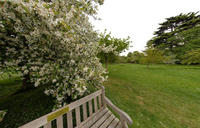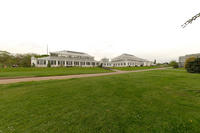You are in: Europe -> United Kingdom. England -> Royal Botanic Garden... , and traditional search or Image Gallery will yield results of this site only
Royal Botanic Gardens, Kew
| Site number: | 1084 |
|
| Type of site: | Cultural | |
| Date: | 18-20th-century | |
| Date of Inscription: | 2001 | |
| Location: | Europe, UK of GB and N. Ireland, London Borough of Richmond upon Thames, southwest Greater London | |
Up to 75 images are shown here. Click on each for more details or on Image Gallery for more images.
Six official UN languages:
Arabic,
Chinese,
English,
French,
Russian,
Spanish
Other languages: Czech, Danish, Dutch, Finnish, German, Hebrew, Hungarian, Indonesian, Italian, Japanese, Norwegian-bokmål, Polish, Portuguese, Swedish
Other languages: Czech, Danish, Dutch, Finnish, German, Hebrew, Hungarian, Indonesian, Italian, Japanese, Norwegian-bokmål, Polish, Portuguese, Swedish
| Description: | The Royal Botanic Gardens in Kew are historic landscape gardens possessing components that exemplify significant periods of the art of gardens in the 18th-20th centuries. The gardens accommodate botanic collections of conserved plants, living plants and documents, which have been greatly augmented throughout the centuries. As of 1759 (the year of their creation) the gardens have presented a major, continuous contribution to the examination of plant diversity and economic botany. --WHMNet paraphrase from the description at WHC Site, where additional information is available. For 360 degree imaging of this site, click here. | |
| The Royal Botanic Gardens, Kew, usually referred to simply as Kew Gardens, are extensive gardens and botanical glasshouses between Richmond and Kew in southwest London, England. The director is Professor Stephen D. Hopper, who succeeded Professor Sir Peter Crane. The Royal Botanical Gardens, Kew is also the name of the organisation that runs Kew Gardens and Wakehurst Place gardens in Sussex. It is an internationally important botanical research and education institution with 700 staff and an income of £44 million for the year ended 31 March 2006. Kew Gardens originated in the exotic garden at Kew Park formed by Lord Capel of Tewkesbury. It was enlarged and extended by Princess Augusta, the widow of Frederick, Prince of Wales, for whom Sir William Chambers built several garden structures. One of these, the lofty Chinese pagoda built in 1761 still remains. George III enriched the gardens, aided by William Aiton and Sir Joseph Banks. The old Kew Park (by then renamed the White House), was demolished in 1802. The "Dutch House" adjoining was purchased by George III in 1781 as a nursery for the royal children. It is a plain brick structure now known as Kew Palace. In 1840 the gardens were adopted as a national botanical garden. Under Kew's director, William Hooker, the gardens were increased to 30 hectares (75 acres) and the pleasure grounds, or arboretum, extended to 109 hectares (270 acres), and later to its present size of 120 hectares (300 acres). The Palm House was built by architect Decimus Burton and iron-maker Richard Turner between 1844 and 1848, and was the first large-scale structural use of wrought iron. The structure's panes of glass are all hand-blown. The Temperate house, which is twice as large as the Palm House, followed later in the 19th century. It is now the largest Victorian glasshouse in existence. In July 2003, the gardens were put on the list of World Heritage Sites by UNESCO. --Wikipedia. Text is available under the Creative Commons Attribution-ShareAlike License. For 360 degree imaging of this site, click here. | ||
| Source: | http://whc.unesco.org/en/list/1084 | |
| Source2: | http://whc.unesco.org/en/list/1084/video | |
| Source3: | http://www.google.com/intl/en/landing/unesco/ | |
| Reference: | 1. UNESCO World Heritage Center, Site Page. | |




















































